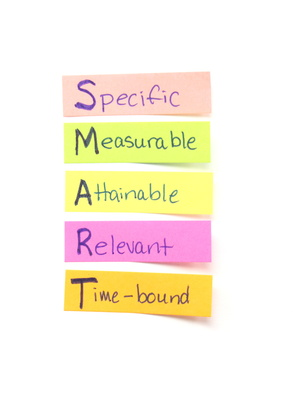As a small business entrepreneur, you know too well the impact of the recent economic upheaval. With an average economic growth of .6% annually from 2007 – 2012, you’ve most likely spent a sleepless night or two worried about how you’re going to meet your financial obligations. It appears we’re turning the corner. Finally! The economic recovery projected for the next 5 years is 3.3% per year. Nevertheless, wouldn’t you like to get your small business growing ahead of the projected recovery?
Atlhough there are different strategies to get your small business growing, how about trying one additional strategy for fit? Why not market your products/services to those industries involved in high growth emerging markets?
Recently, IBISWorld, the world’s largest independent publisher of U.S. industry research, outlined the top industries projected to outpace the current economy recovery. What better way to grow your small business than by capitalizing on the projected growth in the following industries:
1. Solar Panel Manufacturing. With trends moving toward developing more sources of clean, sustainable energy, the solar panel manufacturing industry is experiencing quite a growth spurt. From 2000 – 2012, the industry enjoyed an average revenue growth of 32.3% per year. But it won’t stop there. Growth projections for solar panel manufacturing are 8.2% per year – 5% ahead of the overall projected economic growth.
2. Green and Sustainable Building Construction. As the desire for energy efficient building composed of sustainable materials grows, so does the green and sustainable building industry. Having enjoyed a annualized growth of 28.9% since 2002, the green and sustainable building industry growth is projected at 22.8% per year through 2017.
3. Self-Tanning Product Manufacturing. This is certainly not your mom’s orange-stained tanning product! The recent scare of the increased risk of skin cancer from tanning beds has people turning to healthier alternatives. In 2012, the self-tanning product manufacturing industry celebrated a growth of 18.1%. Over the next 5 years, they are looking for an average growth of 10.7% annually.
4. Pilates/Yoga Studios. There’s no surprise here. We all want to get healthy and stay healthy. As a result, Pilates and yoga studios have grown 12.1% annually in the past 12 years. Between today and 2017, they are looking to continue their growth at 4.8% per year.
5. Social Networking Game Development. Farmville, anyone? With the explosive growth of social networks, you had to know social gaming would follow in its footsteps. In fact, growth in social networking game development was 128% in 2002. Projected growth over the next five years is 22% annually, still significantly above the average economic growth of 3.3%.
6. Online Eyeglasses and Contact Lenses. With advancements in technology, it is becoming easier to shop from your seat rather than your feet. Virtually ‘trying on’ lens wear is now possible. The online eyeglass and contact lens industry have enjoyed an annual growth rate of 28.2% since 2002. What’s in their ‘line of site’ for the next 5 years? They’ll be ‘seeing’ a projected growth of 8.8% annually. (Pun intended.)
7. 3-D Printers. Looks as though it’s not just Raj and Howard from The Big Bang Theory enjoying 3-D printers. The 3-D printing industry takes pleasure in an 8.8% annual growth since 2002. As for their future? They are looking forward to expanding their growth to 14.0% annually.
8. For Profit Universities. If there’s one thing business has learned the past few years, it’s the need for advanced education to keep skills relevant for the marketplace. As state/federal education budgets are cut, it’s becoming increasingly difficult to gain admission into traditional advanced learning institutions. Online teaching has proven to be a low cost alternative. Since 2002, for profit universities have grown an average of 13.6% annually. This industry will be looking to continue its growth by 5% annually over the next five years.
9. Generic Pharmaceutical Market. Yes! We’re getting older (not that I’m bitter or anything). A rise in the aging population means an increase in prescription drugs. The generic pharmaceutical market has had the benefit of an average of 9.6% over the past 10 years. Although changes are likely, due to the healthcare bill, the generic pharmaceutical market is projecting to grow 6.3% annually.
10. Hot Sauce Production. This probably surprised you as much as it did me. With the growth in diversity and the expanding palate (and girth) of the consumer, hot sauce production has grown 9.3% annually with a projected growth of 4.1% per year over the next five years. Who knew?
Other industries worthy of honorable mention include:
- translation services – 2013 projected growth 3%
- secure online data sharing – 2013 projected growth 16%
- digital forensic services – 2013 projected growth 11%
- IT security consulting – 2013 projected growth 9%,
- TV/home theater installation – 2013 projected growth 5%
- online travel agencies – 2013 projected growth 6%
- online shoes sales – projected growth 16% over the next 5 years. This was our most favorite. It seems we’re getting more comfortable with online shoe purchases. Although it may appear that Zappos and Amazon have cornered the market, they actually have only captured 16%!
Strategies to Grow Your Small Business
How can you, as a small business entrepreneur, leverage the growth probability in various industries? Here are a few applications to consider:
1. Offer your product/service to the high growth industry. Most small business entrepreneurs have decided on a target audience. However, if the industry in which your target audience exists is not experiencing growth, so goes your small business. Wouldn’t it be better to consider marketing your products or services to industries involved in high growth emerging markets?
2. Inform, enlighten and bolster your clients growth. Do your current clients exist within the identified growth industries? Does their business enjoy the same growth as the rest of their industry? Do they even know their industry growth rate? This really is your opportunity to shine! Not only can you inform them of the growth, you can enlighten them on the projected growth anticipated for their industry and, if possible, propose your services as a tool to bolster growth in their business.
3. Support realignment of your clients with the high growth industries. Armed with information of projected growth, you can support your clients in realigning their offering to the high growth and emerging industries. They’ll love you for it.
As you may guess, there are plenty of opportunities for small business growth to occur within the next five years. The question is how will you leverage this news for your own business? Let us know. We’d love to hear your ideas and plans for the future of your small business.
And, while you’re at it, is you’ve found this information helpful in thinking how you might grow your small business, we’d be honored to have you as a subscriber.








 One of the most effective ways to grow your business is to develop strong relationships – online or offline – with a group of people who know you, have a clear understanding of your products and/or services, AND enthusiastically promote you to their network. How do you create such a robust network? Here are five steps to ensure that your “net” is working.
One of the most effective ways to grow your business is to develop strong relationships – online or offline – with a group of people who know you, have a clear understanding of your products and/or services, AND enthusiastically promote you to their network. How do you create such a robust network? Here are five steps to ensure that your “net” is working.

 Goal achievement is powerful for the small business entrepreneur. It fuels and sustains the growth of your business. It moves your small business forward. More importantly, goal achievement energizes the central component in your entrepreneurial success – YOU – the small business entrepreneur.
Goal achievement is powerful for the small business entrepreneur. It fuels and sustains the growth of your business. It moves your small business forward. More importantly, goal achievement energizes the central component in your entrepreneurial success – YOU – the small business entrepreneur.




 The quest for work-life balance for entrepreneurs and small business owners is nothing new. The dichotomy of work-life balance dates back to the mid 1800’s. Even then, blurred boundaries between work and play created excessive work hours that entrepreneurs and small business owners admittedly wanted to avoid. Today, with continual advances in technology, we are even more connected to our work. It’s exhausting! It’s stressful! It’s impacting your health.
The quest for work-life balance for entrepreneurs and small business owners is nothing new. The dichotomy of work-life balance dates back to the mid 1800’s. Even then, blurred boundaries between work and play created excessive work hours that entrepreneurs and small business owners admittedly wanted to avoid. Today, with continual advances in technology, we are even more connected to our work. It’s exhausting! It’s stressful! It’s impacting your health.